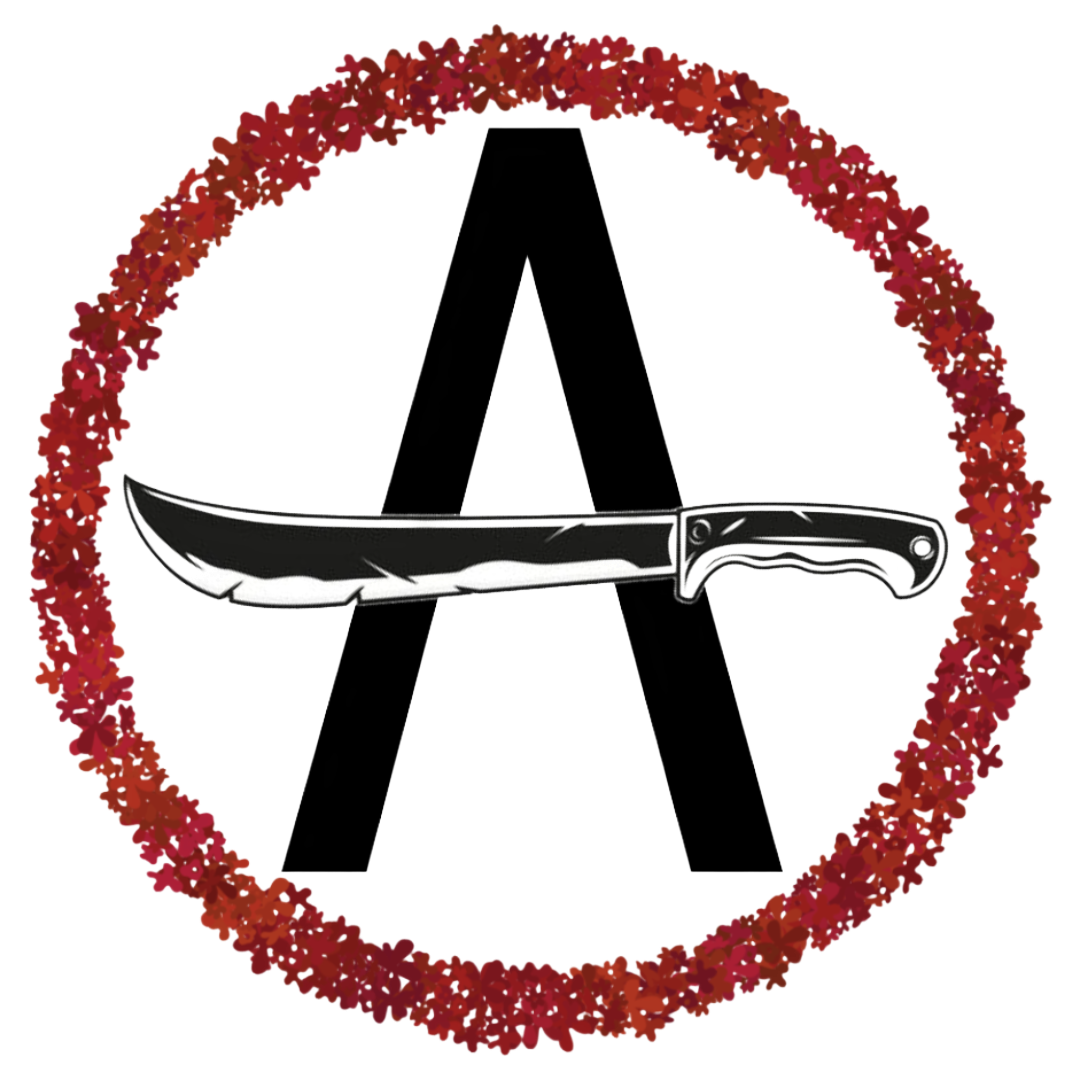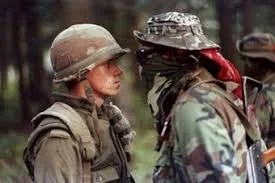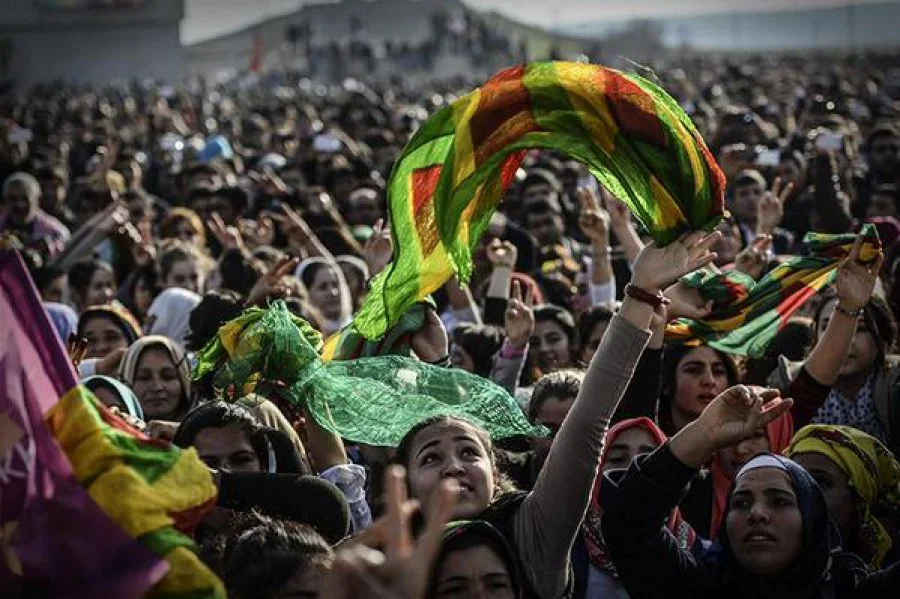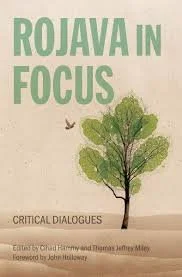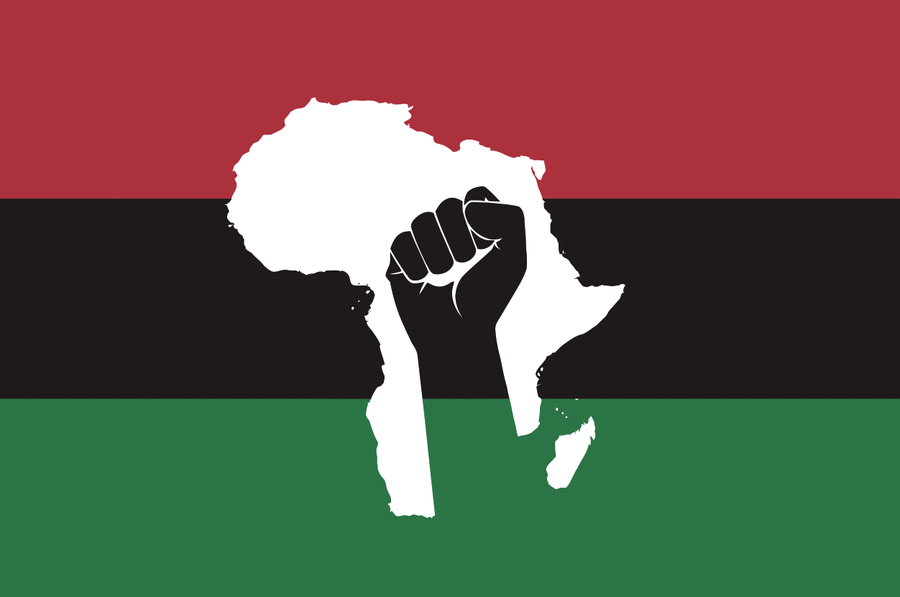
Internationalsim
Intercommunalism - Indigenous Resistance - Zapatismo - Pan-Africanism -Maroonage - Rojava - Democratic Confederalism -
Intercommunalism - Indigenous Resistance - Zapatismo - Pan-Africanism -Maroonage - Rojava - Democratic Confederalism -
Our liberation is bound up with the liberation of all oppressed peoples across the globe. As Black anarchists, we organize from below—not only in resistance to the state and capital, but in deep solidarity with other communities building autonomy, dignity, and life beyond empire. The world has never lacked rebellion—it has lacked connection. Internationalism is not charity, nor symbolic—it is survival, strategy, and shared power.
This page outlines key traditions, models, and principles that shape our political education and organizing, each pointing toward a world where communities determine their own futures, free from white supremacy, settler colonialism, and capitalist domination.
Intercommunalism & Revolutionary Solidarity.
Following in the path of the later work of Huey P. Newton, intercommunalism reminds us that the old nation-state has collapsed under the weight of global capitalism. What’s left are oppressed communities exploited and controlled by empire. Our job is to connect these communities into a revolutionary network of survival, resistance, and autonomy. This vision moves beyond borders, toward decentralized revolutionary power built by and for the people.
Indigenous Resistance on Turtle Island
September 1, 1990, by Shaney Komulainen
Canadian Army soldier Patrick Cloutier and Ojibwe activist and warrior Brad Larocque staring each other down during the Kanehsatà:k Resistance.
Indigenous resistance across what is now called North America teaches us sovereignty, resilience, and refusal. From the Haudenosaunee Confederacy to the land and water defenders of today, Indigenous struggles are frontline battles against ecological collapse, state violence, and erasure. For Black anarchists, standing with Indigenous liberation is not optional—it is essential to our own decolonization, and a mirror for how to live in right relationship with land and each other.
Klee Benally (1975–2023) was a Diné anarchist, artist, musician, and frontline organizer whose life’s work fiercely challenged colonialism, capitalism, and white supremacy. Rooted in his traditional culture and political radicalism, Klee was a critical voice in Indigenous resistance, land defense, and anti-authoritarian movements. He played a unique role bridging Indigenous liberation and Black anarchist thought, insisting on solidarity through action, not rhetoric.
He was a member of Blackfire, a powerful Indigenous punk rock band formed with his siblings, that fused traditional Diné music with punk rebellion. He also played in the experimental band Sihasin, continuing his resistance through sound.
As a writer and thinker, Klee authored:
"No Spiritual Surrender: Indigenous Anarchy in Defense of the Sacred" — a groundbreaking zine that outlined Indigenous anarchist frameworks beyond Western leftist paradigms.
"Fire on the Mountain" — essays and reflections on Indigenous resistance, autonomy, and decolonization.
Dozens of zines and media pieces blending anti-colonial critique, abolitionist politics, and anarchist practice.
Klee was a key organizer with Indigenous Action, Protect the Peaks, Haul No!, and other grassroots land defense campaigns against uranium mining, ski resort expansion, and resource colonialism. His politics refused compromise, insisting on total liberation for Indigenous and oppressed peoples. His life and work continue to inspire Black and Indigenous anarchists navigating both tradition and insurrection.
Zapatismo
The Zapatista movement in Chiapas, Mexico has shown us what it means to reclaim land, language, and life from the bottom up. Their model of communal governance, rooted in Mayan traditions and anti-capitalist resistance, offers a blueprint for how Indigenous and oppressed people can organize outside the state, build their own education, healthcare, and justice systems, and create dignified life in common. Their principle of “lead by obeying” resonates deeply with our vision of horizontal, accountable leadership.
Central to Rojava’s revolution is women’s liberation. The YPJ (Women’s Protection Units) and women-led communes are not symbolic—they are revolutionary engines. The Kurdish women’s movement frames patriarchy as the first form of domination, making its destruction essential to any real liberation. This has led to systemic transformations in every sphere: dual-gender leadership in all councils, the criminalization of forced marriage, and autonomous women’s spaces in politics, economy, and defense.
For Black anarchists, the Rojava model offers powerful lessons. It’s a live case of community autonomy under siege, building dual power while confronting state violence, imperialism, and settler militarism. Like Black communities navigating colonial afterlives in the U.S., Rojava’s revolution is born from dispossession and refusal. The Kurdish movement insists that liberation isn’t just defensive—it’s creative, relational, and rooted in place. Their commitment to grassroots decision-making, armed self-defense, and social ecology echoes the best of the Black radical tradition—from the Deacons for Defense to the Jackson-Kush Plan.
Black anarchists can look to Rojava not as a blueprint, but as a fellow experiment—one that centers gender justice, challenges internalized hierarchy, and builds from the margins rather than appealing to the empire. In a world burning with collapse and repression, Rojava reminds us that we don’t need permission to be free—we just need courage, collective discipline, and a deep love for our people.
Rojava - Daanes
The Rojava Revolution, unfolding in Northern Syria since 2012, is one of the most significant anti-state, anti-capitalist experiments of the 21st century. Emerging during the Syrian civil war, Rojava (now called the Democratic Autonomous Administration of North and East Syria) was built on the ruins of colonial borders and decades of Kurdish oppression by the Syrian, Turkish, Iranian, and Iraqi states. In the face of genocide, war, and imperial neglect, Kurdish communities—alongside Arabs, Assyrians, Armenians, and others—have created autonomous councils, cooperatives, and women-led militias to self-govern and defend their land.
The roots of this revolution go back to the Kurdish liberation movement, particularly the ideological transformation of the Kurdistan Workers’ Party (PKK) and its leader, Abdullah Öcalan. Originally Marxist-Leninist, Öcalan reimagined the struggle after years of imprisonment and study, turning toward a vision he called Democratic Confederalism: a stateless, direct democratic model grounded in gender equality, ecology, and grassroots control. This shift rejected nation-state solutions and centralized power, aiming instead to dismantle hierarchy and patriarchy from the bottom up.
Democratic Confederalism & Decentralized Power
In the liberated zones of Northern Syria, the Kurdish movement has birthed a revolutionary project grounded in direct democracy, feminism, ecology, and ethnic pluralism. Called Democratic Confederalism, it rejects the state altogether—choosing instead a web of autonomous councils, assemblies, and grassroots institutions. Power flows from the neighborhood, not the top. Women co-lead every structure. Ecology is treated not as an afterthought, but as survival.
For Black anarchists, Democratic Confederalism offers a powerful glimpse of what decentralized, stateless self-governance can look like in real time, under siege. It teaches us that liberation must be rooted in daily practice—not slogans. That pluralism is not weakness, but strength. That revolution must be gendered, ecological, and communal. Just as our maroon ancestors built fugitive networks beyond the plantation, Rojava shows how to build federated, cooperative structures beyond the nation-state.
We study Democratic Confederalism not to copy it, but to learn what is possible. It sharpens our critique of hierarchy while deepening our commitment to bottom-up governance, mutual defense, and collective life
Communes, Cooperatives & Alternative Economies
experiments we are keeping an eye on
Every act of self-determination builds the future. From food sovereignty collectives to worker-run media, from mutual aid networks to abolitionist healing spaces, communes and bottom-up cooperatives are living cracks in the empire. They offer both material survival and a model for new relations—non-extractive, anti-capitalist, and rooted in care. Our goal is not just to resist capitalism, but to replace it.
Landless Workers Movement of Brazil
MST (Movimento dos Trabalhadores Rurais Sem Terra), or the Landless Workers Movement of Brazil, offers anarchists a living example of large-scale, autonomous economic organization rooted in land reclamation, mutual aid, and collective production. Since the 1980s, MST has occupied unused land owned by elites and turned it into thriving communities with worker-run farms, schools, and cooperative enterprises. Rejecting both capitalist exploitation and state dependency, MST’s structure is horizontal and democratic, with local assemblies making decisions and national coordination emerging from the grassroots. For anarchists envisioning alternatives to capitalist economies, MST demonstrates how land expropriation and self-managed production can sustain thousands of families while building political consciousness, food sovereignty, and deep-rooted solidarity
This Land Is Our Land by Vincent Bevins
ZONE TO DEFEND
The Zone à Défendre (ZAD)—translated as “Zone to Defend”—originated in France in the early 2000s as a form of radical environmental and anti-capitalist resistance to large-scale infrastructure projects. The most iconic ZAD emerged in Notre-Dame-des-Landes (NDDL) near Nantes, where activists, farmers, and local residents began resisting a proposed airport as early as 2000, after the French government revived a decades-old plan to build the Grand Ouest Airport. By 2008, squatters and organizers began occupying the area to physically and politically block construction, transforming it into a self-managed autonomous zone. After the French state officially declared the area a “Zone d’Aménagement Différé” (a planning zone), opponents reappropriated the acronym ZAD to mean “Zone à Défendre,” signaling a shift toward militant defense of land and ecological futures. The ZAD became a living experiment in communal life: residents collectively built homes, farms, and meeting spaces, while rejecting state authority, consumerism, and private property.
This anti-airport struggle escalated significantly in 2012, when the French government launched Operation César, deploying over 1,000 riot police to evict the encampments. Instead of dismantling the zone, the eviction sparked mass resistance and a national solidarity movement. Tens of thousands protested, rebuilt destroyed structures, and reinforced the zone as a symbol of resistance to both ecological destruction and state repression. After years of legal and physical standoffs, the French government officially abandoned the airport project in January 2018, citing the social unrest it provoked. However, in the aftermath, the state attempted to reassert control by demanding the registration of all ZAD occupants. Many refused, viewing it as a betrayal of the zone’s anti-authoritarian ethos. Today, the ZAD at NDDL remains an occupied and semi-autonomous commune, blending ecological stewardship, direct democracy, and resistance—a microcosm of radical alternatives to capitalist development, with echoes of the Paris Commune, indigenous land defense, and anarchist territorial experiments.
The People's Movement for Land and Liberation
The People's Movement for Land and Liberation (PMLL), through its networks of cooperatives and grassroots projects across the U.S., offers a decentralized model for reclaiming land and resources under the banner of abolition and anti-colonial struggle. Formed by Black, Indigenous, and working-class organizers, PMLL operates housing co-ops, mutual aid farms, and community defense projects that prioritize collective ownership, direct democracy, and liberation from carceral and extractive systems. Unlike NGOs or state-funded programs, these co-ops are embedded in revolutionary politics, aiming to build dual power and autonomy while dismantling the logics of property and profit. For anarchists, PMLL shows that land liberation and economic transformation are not distant goals—they’re happening now, in small, resilient networks that build toward a liberated future from below.
The People’s Network for Land & Liberation (PNLL) is closely affiliated with Cooperation Jackson, and indeed was initiated by it. Launched in 2020, PNLL was created to deepen and expand upon Cooperation Jackson’s work in building community land trusts, mutual-aid structures, cooperatives, and community-controlled land and production infrastructure .
Pan-Africanism &
Global Black Struggle
Pan-Africanism speaks to our connection across imposed borders. Whether in the radical visions of Kwame Nkrumah, Walter Rodney, or the Organization of African Unity’s anti-imperialist roots, the Pan-African tradition ties together Black struggles from Harlem to Accra, from Port-au-Prince to Johannesburg. For Black anarchists, Pan-Africanism deepens our commitment to anti-colonial struggle, while challenging us to build unity without hierarchy, and transnational solidarity without nationalism..
